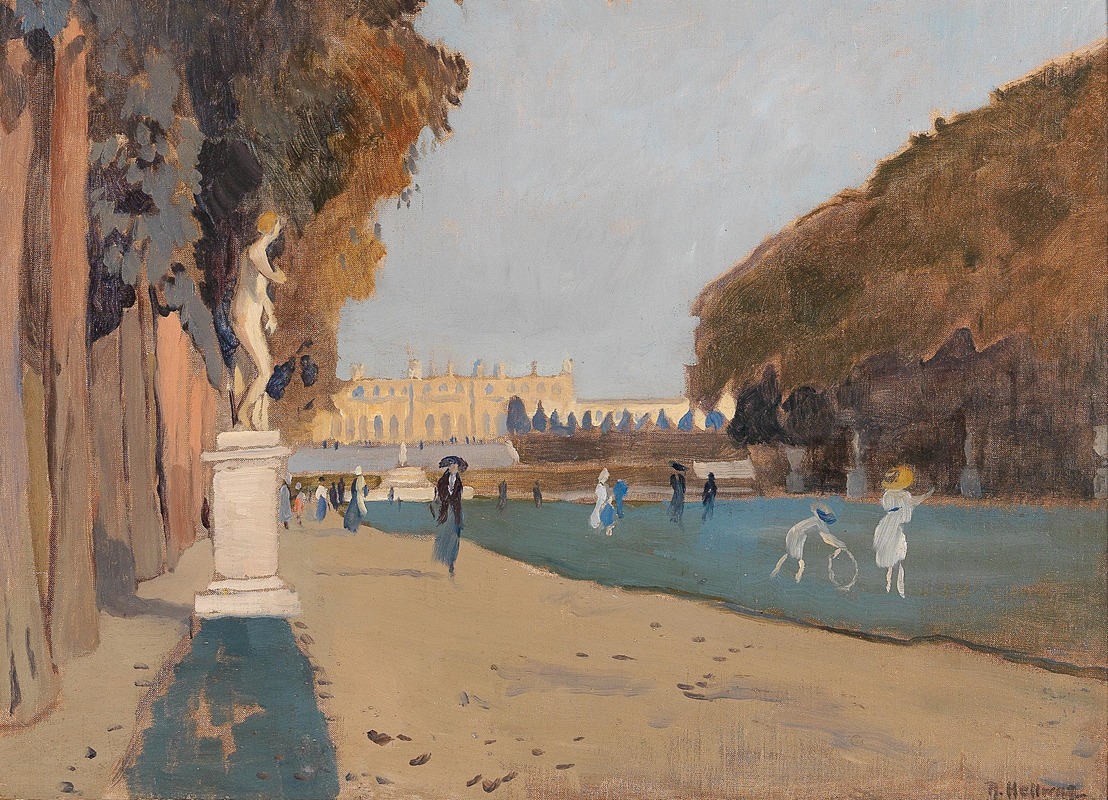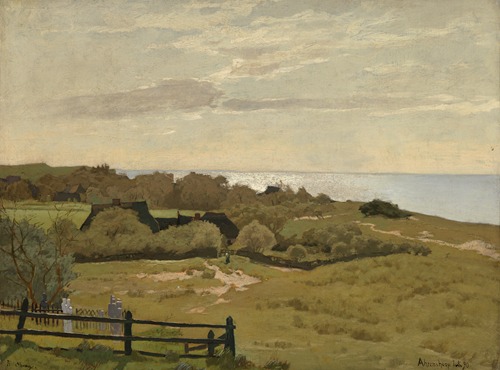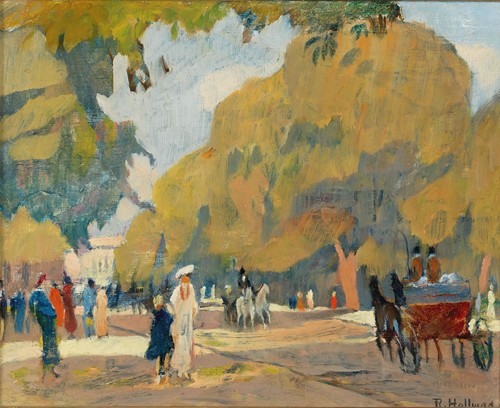
Rudolf Hellwag was a German marine and landscape painter.
As the son of the engineer Wilhelm Hellwag, he enjoyed an education at the art academies in Munich and Karlsruhe, where he was a master student under Ferdinand Keller and Gustav Schönleber from 1890 to 1895. He undertook numerous study trips to the North Sea and Baltic Sea coasts, to Sweden and Norway, to New York and Italy. In 1900, longer periods of study took him to Cornwall (St. Yves) and to London, where he lived from 1903 and was regarded as a representative of German art in England. There he was interned during the First World War. Artistically, he preferred beach motifs, as well as English landscape motifs, parks and gardens, and in the last years of his life motifs fromLake Constance.
In terms of art history, Hellwag is generally attributed to Impressionism at the height of his creativity. However, a number of his works already show expressionist elements to varying degrees, and that is not surprising given a creative period that stretched over so many decades, even though a linear stylistic development cannot be proven in the absence of a meaningful dating of most of the works.
He was represented at exhibitions in the Munich Glass Palace (1894-1914), at the Great Berlin Art Exhibition (1894-1914), in the Berlin Secession (1921/22), as well as in Darmstadt, Dresden, Düsseldorf, Stuttgart and other cities. Rudolf Hellwag was already a full member of the Deutscher Künstlerbund in 1906 . Works by him can be found e.g. in the Kunsthalle Karlsruhe ( The White Sail 1910), in the Cultural History Museum Magdeburg ( Evening in the Fishing Port 1896), in the Kunsthalle Mannheim ( Morning on the Thames 1907), in the Augusteum (Oldenburg). He also designed murals in the Kunsthalle, the district office, the Grand Ducal Palace, the Technical University in Karlsruhe and the University Library in Heidelberg. The Munich illustrator Hans Hellwag and the Berlin art historian Fritz Hellwag were his brothers.
His grave is in the Südwestkirchhof in Stahnsdorf .


